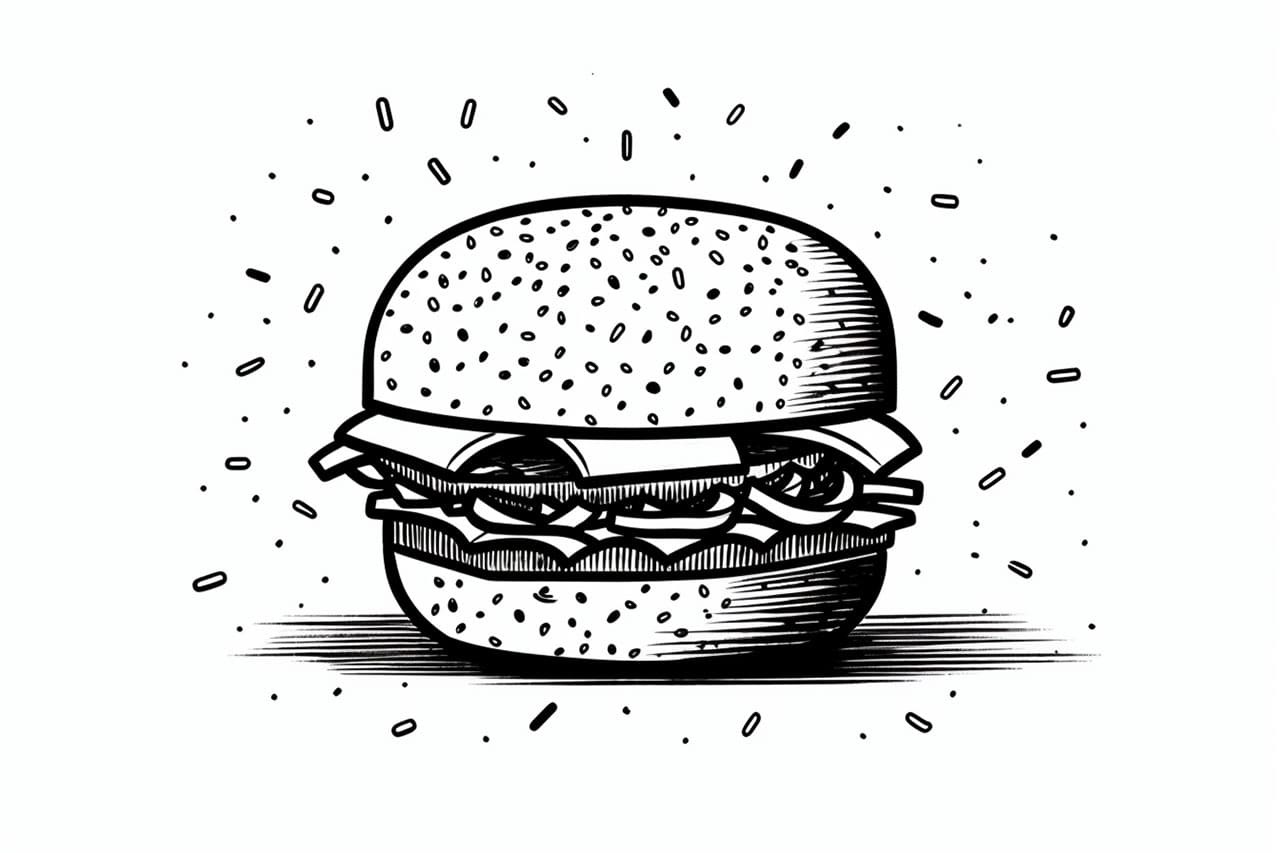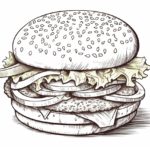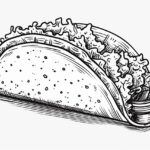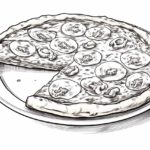Are you craving a delicious hamburger, but can’t find one nearby? Why not take a break from your hunger and draw a mouthwatering hamburger instead? In this step-by-step guide, we will show you how to draw a hamburger that looks good enough to eat. So grab your pencils and get ready to create a tasty masterpiece!
Materials Required
To create your hamburger drawing, you will need the following materials:
Now that you have your materials ready, let’s dive into the drawing process!
Step 1: Draw the Bun
Start by drawing a slightly curved horizontal line near the center of your paper. This line will serve as the bottom edge of your hamburger bun. Next, draw another curved line just above the first one to complete the top edge of the bun. Make sure the ends of both lines are slightly rounded to give the bun a realistic look.
Step 2: Add Texture to the Bun
To make the bun look more appetizing, let’s add some texture. Use short, curved lines to draw a series of lines across the bun. These lines represent the sesame seeds sprinkled on top of the bun. Be sure to vary the length and direction of the lines to create a natural, textured appearance.
Step 3: Draw the Patty
Underneath the bun, draw a slightly curved horizontal line. This line will serve as the bottom edge of the patty. Next, draw another curved line just above the first one to complete the top edge of the patty. To add texture and make the patty look grilled, draw some irregular lines across its surface, giving it a charred effect.
Step 4: Add the Lettuce
On top of the patty, draw a wavy line to represent the lettuce. Make the line curve slightly to give the lettuce leaves a natural appearance. You can add some jagged edges to the wavy line to create the illusion of multiple lettuce leaves. Remember to leave some space for the other ingredients.
Step 5: Draw the Cheese
Above the lettuce, draw a rectangle-like shape to represent the cheese slice. Make sure the edges of the cheese slice are slightly rounded to give it a more realistic look. If you want your hamburger to have melted cheese, you can draw some irregular lines on top of the cheese slice.
Step 6: Add the Tomato
On top of the cheese, draw a circle shape to represent the tomato slice. To give it some texture, draw some small lines at the top and bottom of the circle to imitate the tomato’s skin. You can also draw a small circle in the middle to represent the tomato’s core.
Step 7: Draw the Pickles
Next, draw some small oval shapes on one side of the tomato slice to represent the pickles. You can draw as many pickles as you like, and vary their size and position to create a more visually appealing arrangement.
Step 8: Add the Onion
On the other side of the tomato slice, draw some thin, curved lines to represent the onion slices. These lines should be smaller and thinner than the pickles. You can draw multiple onion slices, overlapping them slightly for a more realistic appearance.
Step 9: Draw the Sesame Seeds
To finish off the top bun, draw some small, irregular shapes on the bun’s surface to represent additional sesame seeds. These seeds will add more texture and detail to your hamburger drawing.
Step 10: Add Shadows and Highlights
Now that you have completed the main elements of your hamburger drawing, it’s time to add some shading to create depth. Use your pencil or colored pencils to lightly shade areas that would be in shadow, such as the bottom of the bun or the patty. You can also add highlights by leaving some areas blank or lightly adding some white lines to represent light reflecting off the ingredients.
Conclusion
Congratulations! You have successfully created a mouthwatering hamburger drawing. By following these step-by-step instructions, you were able to create a realistic representation of everyone’s favorite treat. So whether you’re an aspiring artist or just looking for a fun activity, drawing a hamburger is a delightful way to satisfy your creative cravings!
Fun Facts About Hamburgers
- Origins: While the exact origins of the hamburger are debated, it is widely believed to have originated in the United States in the late 19th or early 20th century. One popular theory is that it was created in Hamburg, Germany, hence the name “hamburger.”
- Popularization: The hamburger gained popularity in the United States during the early 20th century, especially at fairs, carnivals, and fast-food restaurants. It became an iconic American dish and eventually spread to other parts of the world.
- Ingredients: A classic hamburger consists of a grilled or fried ground beef patty served between two slices of bread, typically a bun. However, there are countless variations, including veggie burgers, turkey burgers, and even seafood burgers.
- Cheeseburger: The addition of cheese to a hamburger creates what is known as a cheeseburger. American cheese is the most common choice, but other varieties such as cheddar, Swiss, and pepper jack are also popular.
- Condiments and Toppings: Hamburger toppings vary widely depending on personal preference and regional traditions. Common condiments and toppings include lettuce, tomato, onion, pickles, ketchup, mustard, mayonnaise, and relish.
- National Hamburger Day: May 28th is celebrated as National Hamburger Day in the United States, honoring this iconic dish and its cultural significance.
- Big Mac: The Big Mac, introduced by McDonald’s in 1968, is one of the world’s most famous hamburgers. It consists of two beef patties, special sauce, lettuce, cheese, pickles, and onions, served on a sesame seed bun.
- World’s Largest Hamburger: The record for the world’s largest hamburger was set in 2017 in the United States. It weighed a staggering 2,014 pounds (914 kilograms) and was cooked and assembled at a festival in North Dakota.
- Hamburgers in Space: In 2001, Russian cosmonauts brought hamburgers with them on a mission to the International Space Station. These space burgers were vacuum-sealed and freeze-dried for preservation.
- Health Concerns: While hamburgers are delicious, they are often high in calories, saturated fat, and sodium. However, healthier options are available, such as lean ground beef, turkey burgers, or veggie patties.
- Cultural Icon: The hamburger has become a symbol of American fast food culture and is often associated with backyard barbecues, picnics, and summertime gatherings.
These facts highlight the rich history and cultural significance of the hamburger, showcasing its evolution from a humble street food to a global culinary icon.









